5 yoga poses to help you become more balanced and less stressed
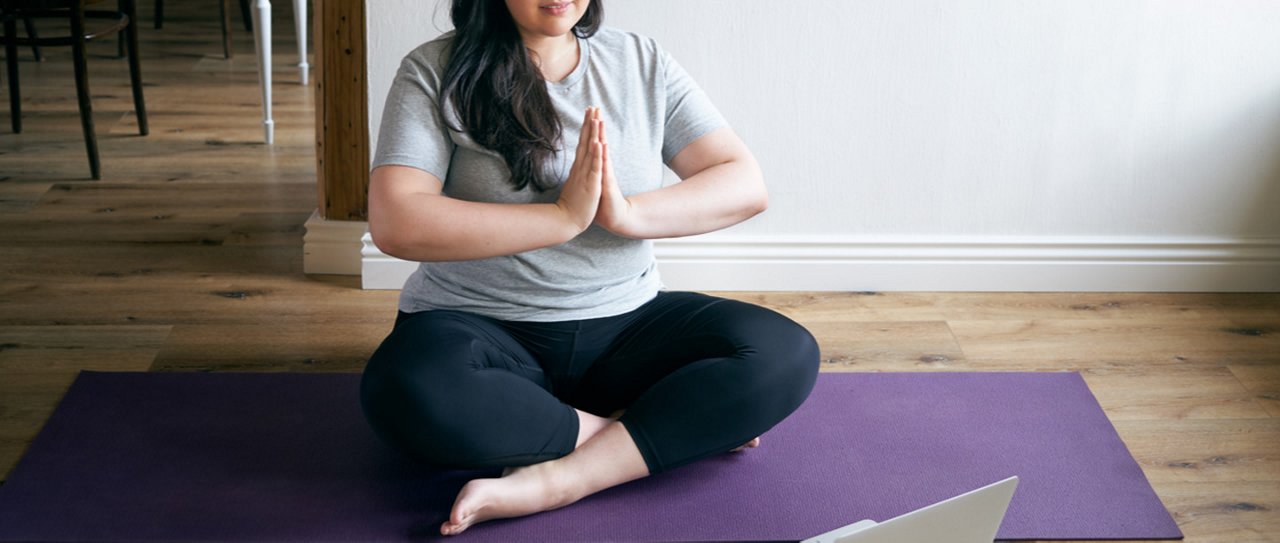
Yoga has been around for many centuries. It originated in ancient India as a part of spiritual practices, and in its Hindu and Buddhist roots, yoga wasn’t specifically focused on physical fitness. But during the 20th century, a new and different, secular version of yoga started emerging in the West.
Today the modern practice of yoga remains one of the top fitness trends in the U.S., year after year. Studies have shown that incorporating yoga into your exercise plan can help with your flexibility, muscular strength and endurance, stress reduction, and improving overall health and fitness.
There are various forms and styles of yoga. In the Western world, modern hatha yoga focuses on the physical practice of various poses (called asanas) to increase strength, balance, flexibility and mindfulness. The asanas help people to tune into their bodies.
Benefits of asana practice include better control and awareness of breath; better balance; increased strength, stability and flexibility; increased bone density; and reduced anxiety, pain and discomfort.
Yoga can also help ease back pain and arthritis symptoms, reduce body-wide inflammation, benefit heart health, and relax you to help you sleep better, according to Johns Hopkins Medicine.
I can tell you from my experience leading a Gentle Yoga class comprised of mostly midlife and older adults, it is one of the most popular and beneficial forms of exercise in this population. Participants find the poses empowering, and they enjoy the unique combination of physical and mental focus and sense of well-being that yoga brings.
Focus on breathing
One thing that differentiates yoga from other forms of exercise is mindfully connecting the breath to your movements. The idea is to help you become more present in the moment and to link body and mind.
Focus on long, slow, deep breathing. Try to match the length of your inhales with the length of exhales. Traditionally, in hatha yoga, breathing is done in and out of the nose. However, breathe in the manner that is most comfortable for you. See this Yoga Journal article for more on breathing technique.
Try these yoga poses for beginners
Mountain pose (Tadasana)
This pose is all about standing tall and firm like a mountain. It is the foundation for other standing poses. Mountain Pose helps improve your posture and strengthen your core and leg muscles.
- Stand with your feet close, and toes pointed forward.
- Roll your shoulders back and down, so that your chest is lifted and you are standing up straight.
- Make sure that your ankles, knees and hips are aligned. Spread your weight evenly across your feet, heels and toes.
- Let your arms hang at your sides, with palms facing toward your legs.
- Keep the stomach in, chest lifted, spine stretched up, and your chin parallel to the floor.
- Stay in this pose for 30 seconds to one minute. Breathe slowly and rhythmically.
- Remain focused and balanced.
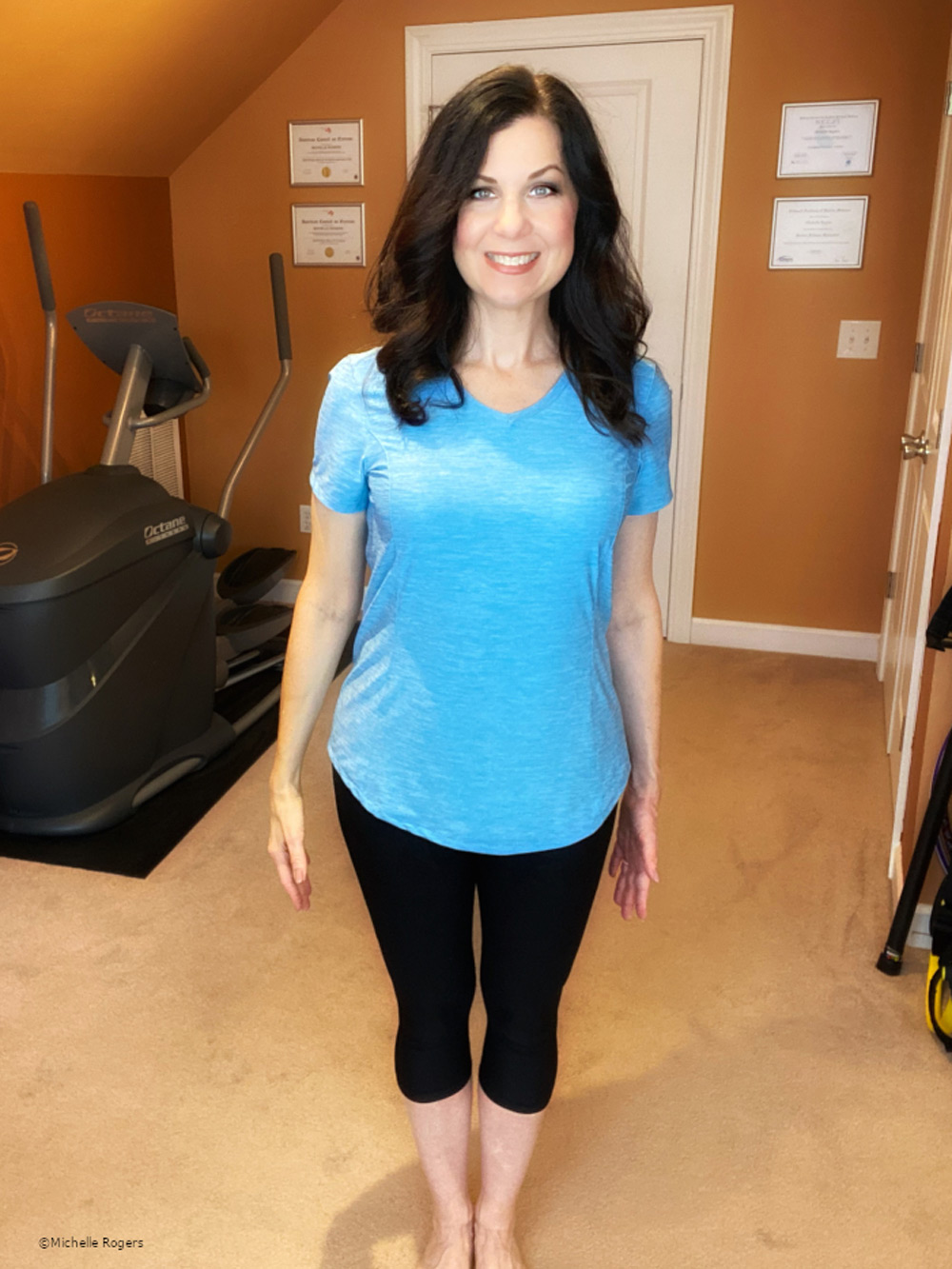
Chair pose (Utkatasana)
This is a type of squat, and helps improve balance and strength. Think of chair pose as sitting in an imaginary chair.
- Begin in Mountain Pose, with your feet slightly apart. Breathe slowly and deeply.
- Inhale, lifting your arms overhead, palms facing each other.
- Exhale as you slowly bend your knees and lower your hips back and down, keeping your chest lifted and your weight in your heels.
- Keep your spine straight from the top of your head to your tailbone.
- Hold this pose in the lowered position for one breath or longer.
- Return to Mountain Pose by slowly exhaling while you straighten your knees and bring your arms to your sides.
You can modify this pose by holding onto a chair or limiting the depth of your squat.
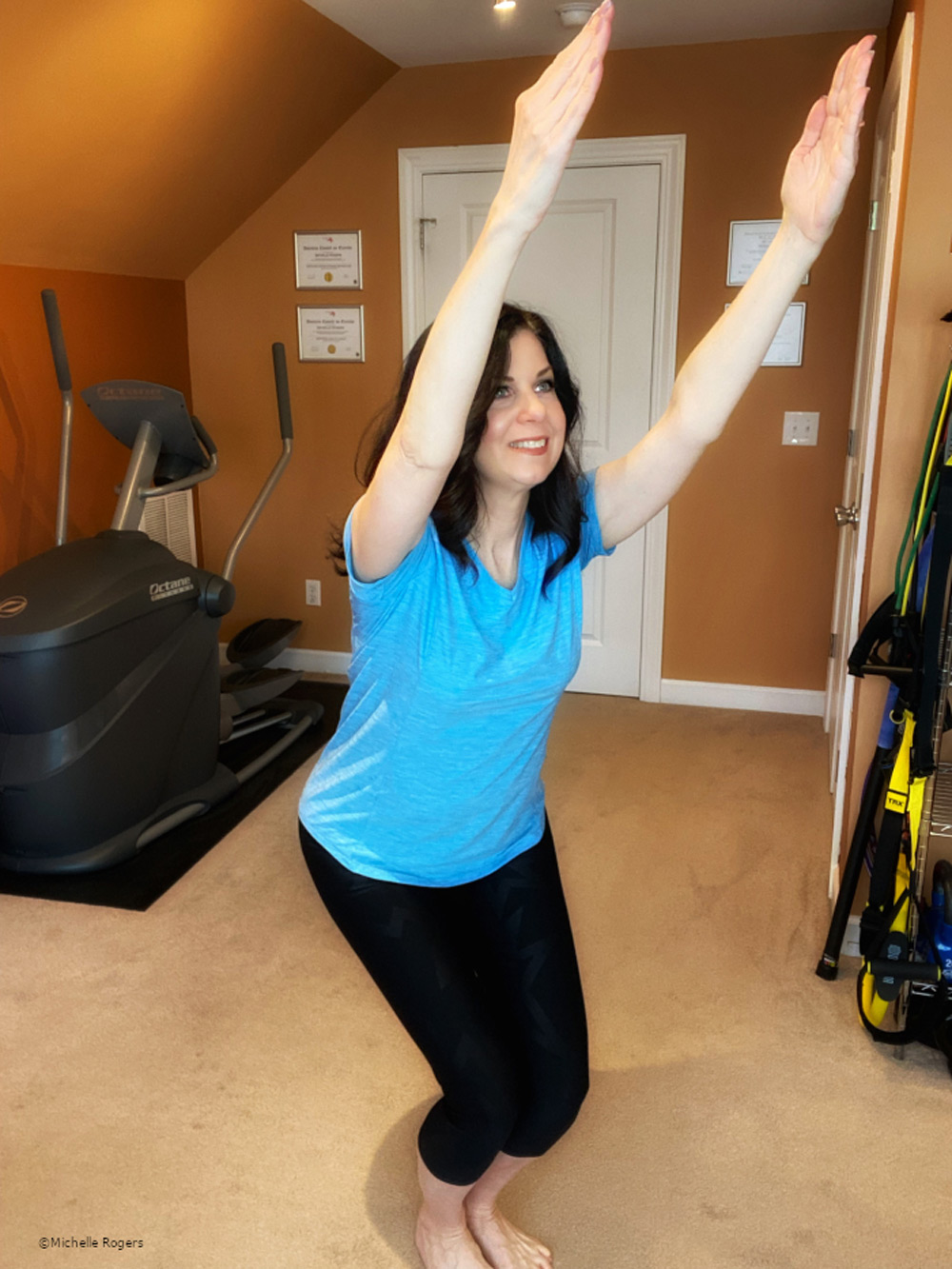
Tree pose (Vrksasana)
Tree Pose helps improve your balance and posture, promotes focus and concentration, and strengthens thighs and calves. Visualize yourself as a tree, firmly rooted to the ground, with branches growing up to the sky.
- Begin in Mountain Pose.
- Keep your left foot planted firmly on the floor. Lift right heel off the floor and slide right foot in so that heel rests against inside of left ankle, keeping right toes connected to the floor. Open knee toward the back of the room. Find your balance.
- Option: Lift right foot off the floor against the inside of the left midcalf, or lift the right foot up to the inside of the upper left thigh. Caution: Do not allow the right foot to press on the inside of the left knee joint.
- Put your palms together (prayer pose) at heart center.
- Option: Grow your tree branches to the sky – lift both arms up overhead into a V, palms facing each other. Focus on being tall and strong.
- To help with balance, fix your gaze on a spot on the wall in front of you.
- Continue breathing slowly and deeply as you remain in this position for 30 seconds to one minute.
- Repeat on the other side.
You can modify this pose by keeping your toes on the floor instead of putting your foot further up the leg, or by holding onto a chair with one hand.
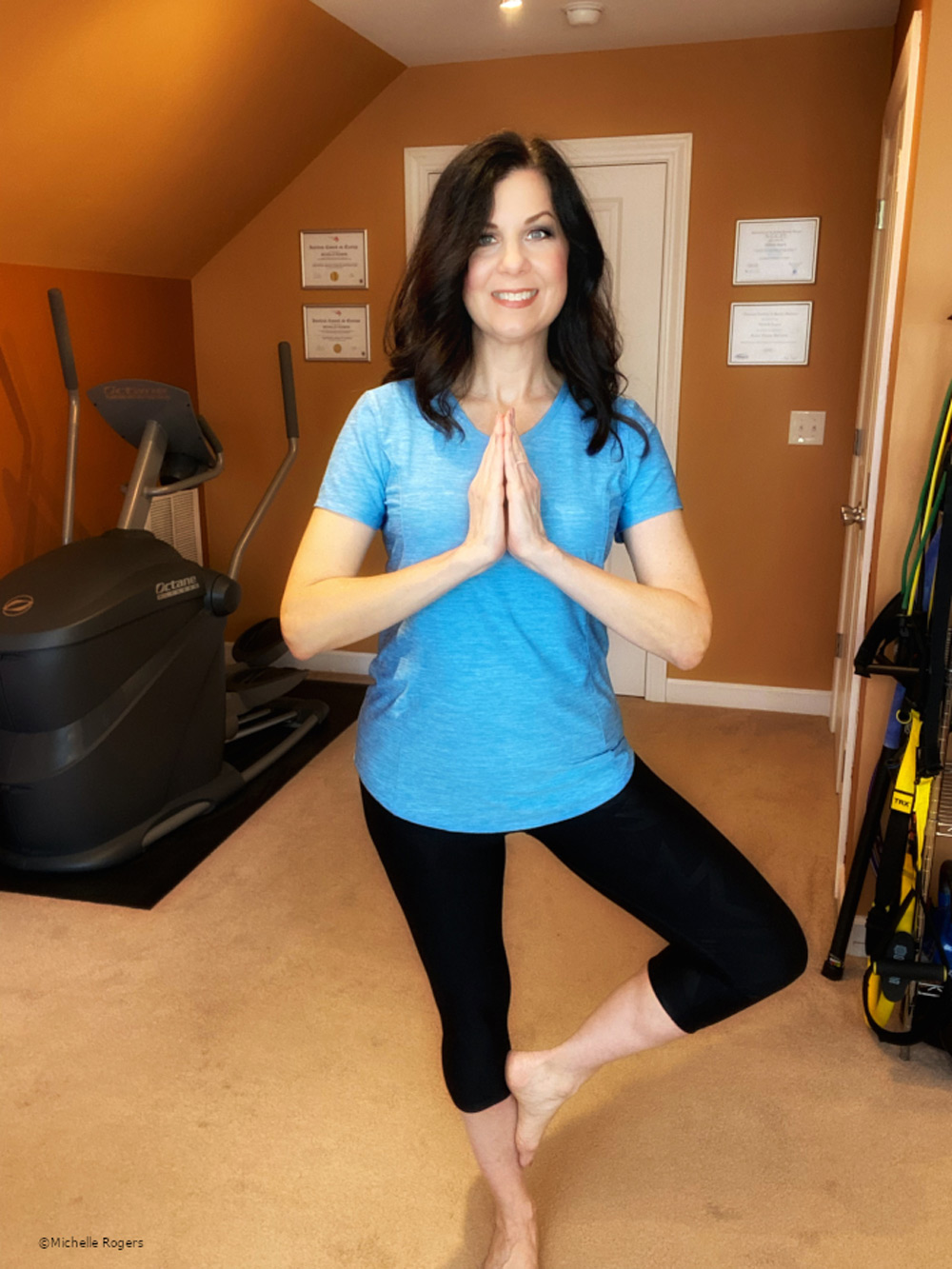
Warrior II pose (Virabhadrasana)
This posture grounds and centers the body, and helps to improve balance, leg strength and a sense of well-being.
- From Mountain Pose, step out so feet are wide apart.
- Turn the right foot so the right toes point towards the side wall. Turn the left toes towards the front of the room.
- Hips should stay facing the front of the room.
- Bend right knee until it’s slightly over the right ankle. Stretch to a depth that is comfortable for you. If you can, stretch until your right thigh is parallel to the floor.
- Keep left leg straight.
- Keep your chest lifted, and your shoulders aligned with hips.
- Extend arms out to the sides of the room at shoulder level, parallel to the floor and palms down.
- Look to your right over your fingertips.
- Hold this position for 30 seconds, working your way up to one minute, while breathing slowly and deeply.
- Return to standing position.
- Repeat on the other side.
You can modify this pose by holding onto a chair, keeping your hands on your hips, or narrowing your stance and bending your knee less.
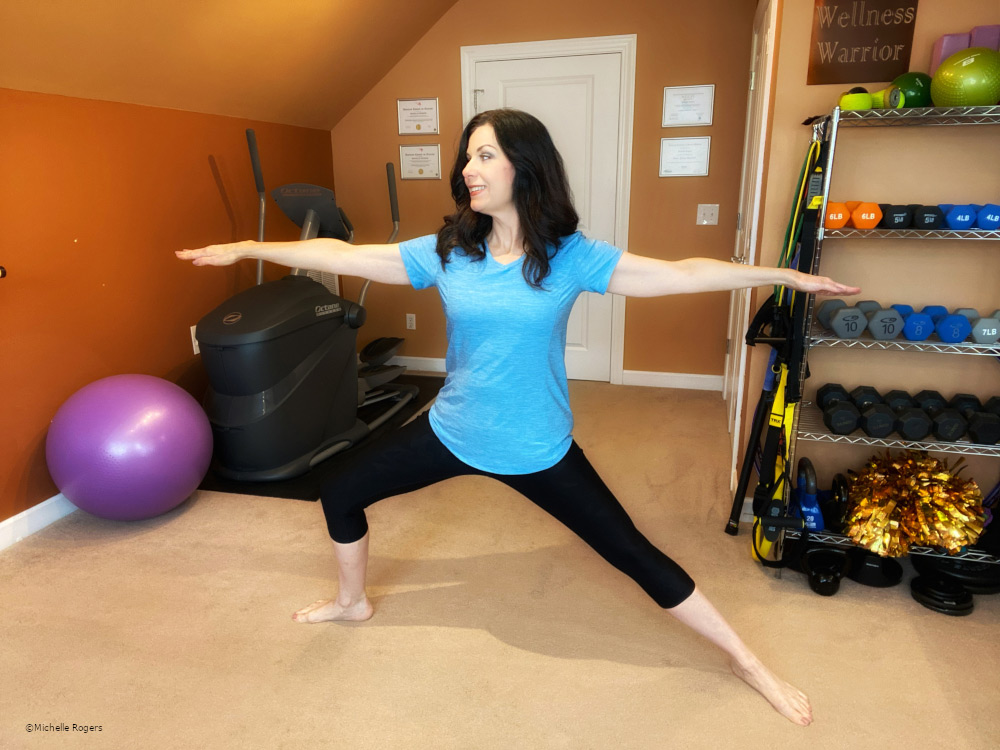
Corpse pose (Savasana)
This pose will help you deeply relax, as you learn to allow energy to flow freely through your body. Corpse Pose helps to reduce stress, find your inner quiet, and invite calmness and peace within.
Corpse Pose is suggested as a good way to end every yoga session. But you can also do it on its own, any time you would like to calm your mind and reduce tension in your body.
- Lie flat on your back on a mat or carpet, and close your eyes.
- Legs should be about two feet apart or whatever is comfortable. Allow your legs to open and toes to fall slightly outwards.
- Palms should face upwards, with fingers loosely curled.
- To release the neck area, turn your head gently from side to side and then return it to center.
- Relax your feet. Then focus on relaxing your calves, then slowly work your way up the body – thighs, buttocks, back, and your chest. Relax your shoulders, arms, hands and neck. Let your eyes, face and scalp feel relaxed. When you feel a tense muscle, tighten it first and then relax it. Make yourself “melt” into the floor.
- Breathe slowly and deeply throughout.
- If your mind starts to wonder, concentrate on the slow rhythm of your breathing.
- Try to remain in the Corpse Pose for at least five minutes to enter a state of complete relaxation.
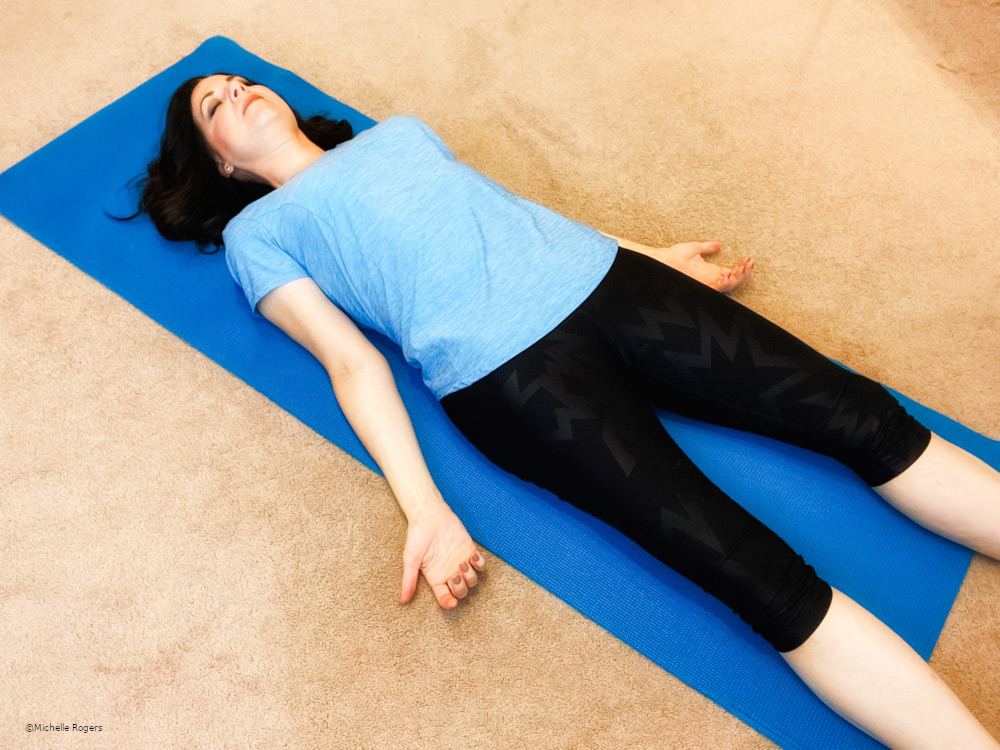
Interested in trying a yoga class? You can search for qualified yoga teachers.
If you are not accustomed to exercising or if you have pre-existing conditions, it’s a good idea to check with your health care professional before beginning a new fitness program to ensure that it’s appropriate for you.
Browse related articles

Blue Cross and Blue Shield of North Carolina does not discriminate on the basis of race, color, national origin, sex, age or disability in its health programs and activities. Learn more about our non-discrimination policy and no-cost services available to you.
Information in other languages: Español 中文 Tiếng Việt 한국어 Français العَرَبِيَّة Hmoob ру́сский Tagalog ગુજરાતી ភាសាខ្មែរ Deutsch हिन्दी ລາວ 日本語
© 2024 Blue Cross and Blue Shield of North Carolina. ®, SM Marks of the Blue Cross and Blue Shield Association, an association of independent Blue Cross and Blue Shield plans. All other marks and names are property of their respective owners. Blue Cross and Blue Shield of North Carolina is an independent licensee of the Blue Cross and Blue Shield Association.




